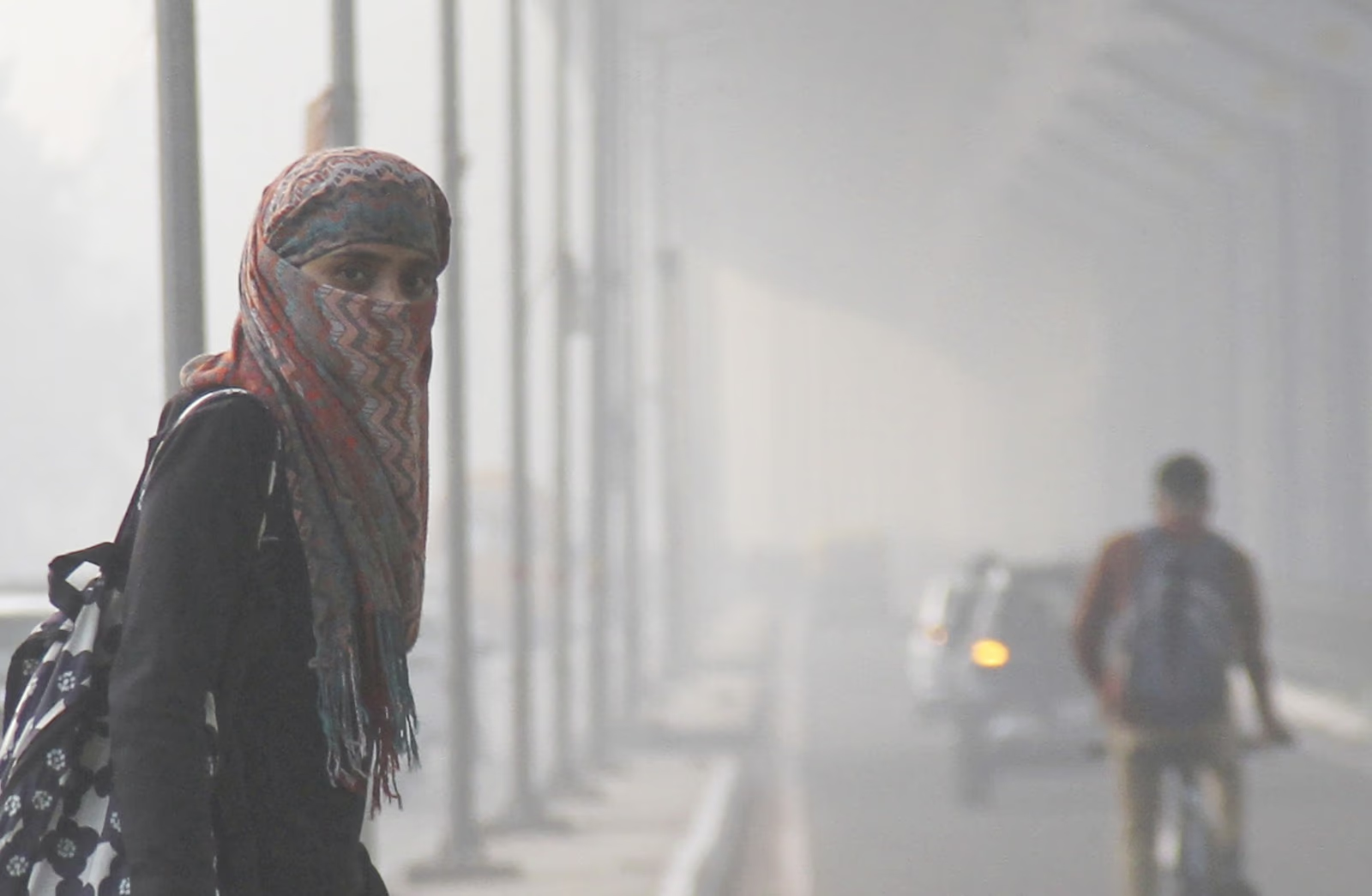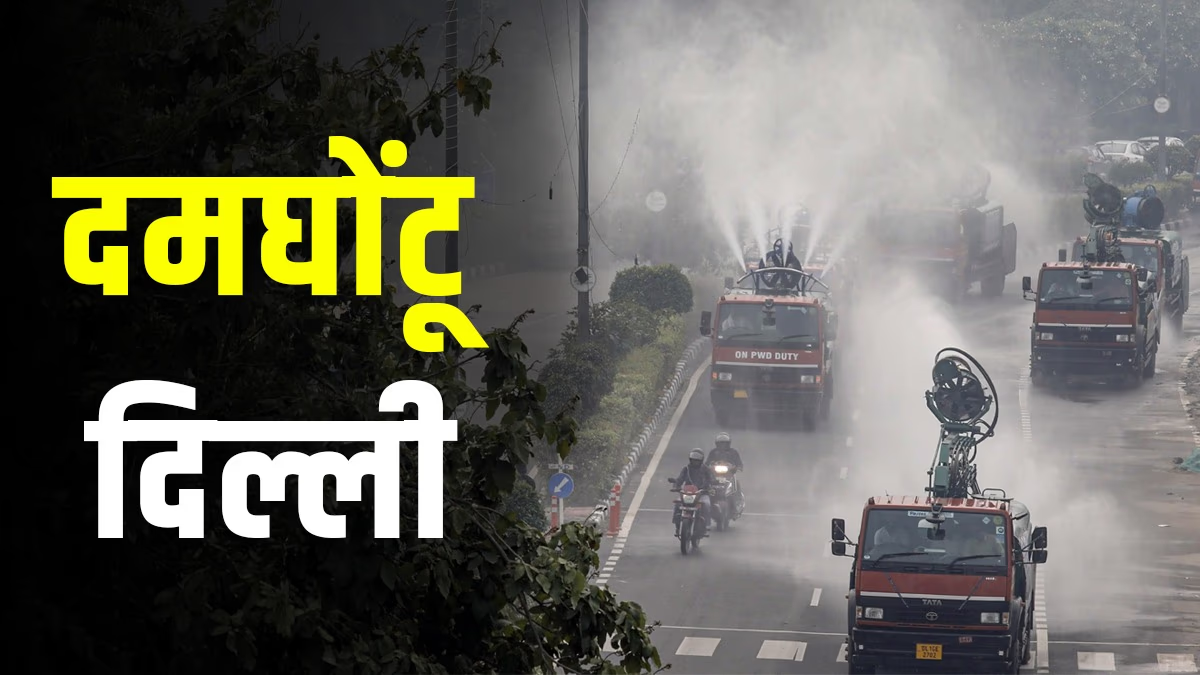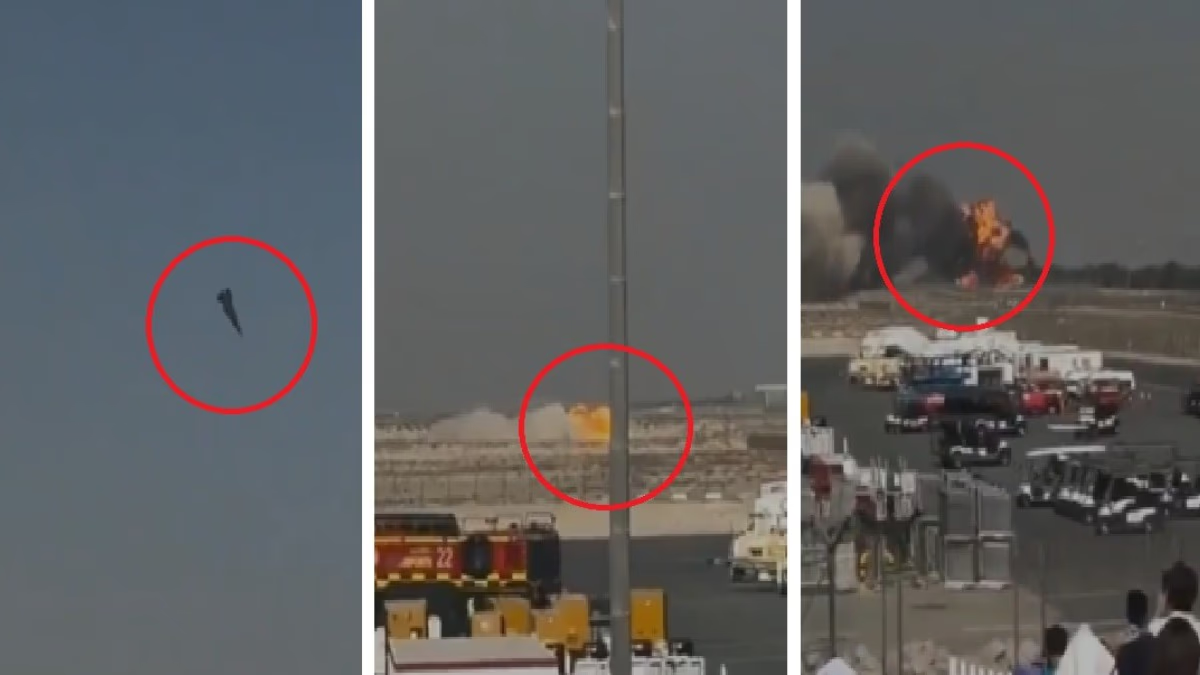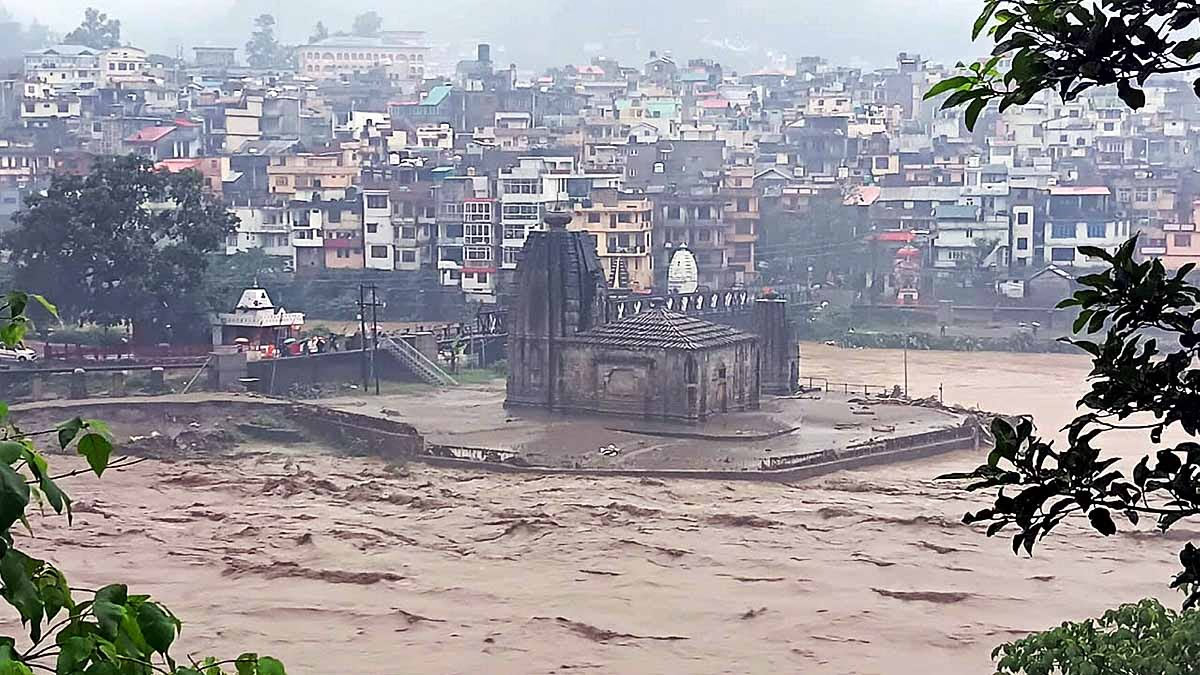The seasons are changing in the country, and the suffocating winds of Delhi-NCR are getting everyone sick. The city is enveloped in a blanket of fog and smog, visibility on the roads is recorded as zero. Traffic is significantly slowed, with long lines caught up in jams. Every year, plans are drafted on paper regarding pollution, big announcements are made in the name of control, yet for four months, the skies of Delhi-NCR appear clouded with smoke. What are the underlying reasons that prevent the citizens here from finding relief from pollution?
In the National Capital Region, the conditions due to air pollution have deteriorated further in the past 24 hours. On Thursday morning at 6 AM, the AQI at Jahangirpuri soared to 606, a level considered dangerously high. It can undoubtedly be said that taking a breath in Delhi has become nearly impossible. In the span of 24 hours, the average AQI of 14 stations stands in the severe+ category (above 450).
Pre-winter Discussions on Stubble Burning and Diwali
Typically, people in Delhi are compelled to breathe in toxic air year-round. However, with November approaching, everyone starts to realize just how deplorable the condition has become. Especially before winter sets in, topics like Diwali and stubble burning gain attention. These factors, among others, turn Delhi into a gas chamber in November. Yet, the weekly AQI data around Diwali suggests that fireworks have little effect here. Even stubble burning doesn't contribute as much to Delhi's pollution as generally believed.
A new study from Delhi-based environmental think tank 'Centre for Science and Environment' (CSE) states that stubble burning only contributes to 8% of Delhi's air pollution. Worryingly, some alleged solutions have even become part of the city's problem. The statistics reveal that nearly half of the year is spent breathing toxic air in the capital. This underscores the necessity for a long-term solution.
Paper Plans, Extravagant Declarations... But the Problem is Years Old
Every year, new plans are crafted to reduce pollution in Delhi, and unique plans are announced. However, a concrete solution is yet to be found and necessary measures are not implemented effectively. For this, both the government and the system are accountable.- Approval has been granted for the reappointment of Civil Defense Volunteers for four months (1 November to 28 February) following the pollution crisis. Their services were terminated earlier at the direction of former Chief Minister Arvind Kejriwal. These volunteers will play an active role in Delhi's pollution reduction campaign and work to lower the levels of smog and toxic particles in the national capital.- Announcements have been made to seize old vehicles, with the installation of Automatic Number Plate Recognition (ANPR) camera systems at petrol pumps, and even artificial rain plans. However, no improvements in ground arrangements have been observed.- Despite a hazardous AQI, the Commission for Air Quality Management (CAQM) has not yet entered action mode. Consequently, immediate anti-pollution measures under the Graded Response Action Plan (GRAP) have not been implemented. The commission anticipates an improvement by Thursday, though current figures show no signs of relief.- On Wednesday, the CAQM advised the governments of Uttar Pradesh, Haryana, Rajasthan, and Delhi to rein in older pollution-causing vehicles. This recommendation follows directives from the National Green Tribunal (NGT) and the Supreme Court, emphasizing the need for stringent action against end-of-life (EoL) vehicles.- A ban has been placed on older BS-III and BS-II model vehicles in Delhi. These vehicles are not permitted to operate on roads in Delhi. The Delhi government often accuses neighboring states of allowing entry of such vehicles.- Over half of the BS-III and BS-II vehicles in Delhi remain, totaling 60,140. By September 2024, only 2,310 old vehicles were seized in Delhi. In contrast, 22,397 vehicles were seized in 2023. These numbers indicate that the action as rigorous as previous years has not been taken this year.

Source: aajtak
How Will Polluting Vehicles Be Caught?
Various action plans have been devised to catch vehicles emitting toxic smoke in Delhi. One such plan includes installing Automatic Number Plate Recognition (ANPR) camera systems at petrol stations. Decidedly, Delhi's pilot project will be executed across the NCR. Under this initiative, the camera systems will deny fuel to identified polluting vehicles at petrol stations. Additionally, as such vehicles arrive at fuel stations, audio messages from cameras will prompt teams to take immediate action per rules. CAQM claimed to enforce this model throughout NCR, yet details about how far the initiative has progressed remain unclear. Such vehicles are among the primary causes of pollution throughout the year in Delhi-NCR.
For pollution control, the Delhi Department of Transport provisioned hefty fines for lack of Pollution Under Control (PUC) certificates, penalizing repeat offenders up to Rs 10,000 or even six months of jail time. Over the recent months, Delhi increased fees for PUC certification. Just a day prior, it was revealed that some PUC centers in Noida and Ghaziabad issue certificates without vehicles even being present, only by seeing vehicle photos.
Smoke-Emitting Vehicles Deteriorating Delhi's Health
According to the central support system for Air Quality Management data, vehicles pose a major problem contributing to Delhi's transformation into a gas chamber. Emissions from these vehicles are spreading pollution, making people ill. The data suggests vehicular carbon emissions account for about 13% to 15% of overall pollution, with another significant portion from stubble burning. Burning stubble in neighboring states has exacerbated the condition, resulting in a thick smog layer over the city.
How Has Delhi Become a Gas Chamber?
In essence, vehicles emit not just carbon dioxide, but also nitrous oxide and methane gases. Smoke carries toxic pollutants like carbon monoxide, smoke-producing volatile organic compounds, nitrogen oxide, sulfur dioxide, formaldehyde and benzene.
Why Has Delhi's Air Become Toxic?
The severity of Delhi's air pollution can be understood by looking at the level of particulate matter (PM2.5 and PM10). These microscopic particles can deeply penetrate lungs and enter the bloodstream, posing significant health risks. They can cause respiratory problems, and prolonged exposure may increase the risk of heart disease along with other threats. Particulate matter provides insights into levels of nitrogen dioxide, sulfur dioxide, carbon monoxide and ozone.
Supreme Court's Inquiry?
The Supreme Court held a hearing on pollution on November 12 and suggested Delhi implement a year-round ban on fireworks. The court advised the Delhi Police Commissioner to establish a special cell for banning fireworks and instructed the Delhi government to decide on a permanent ban before November 25. The SC questioned why a national permanent ban wasn't imposed and why restrictions apply only in Delhi for some months.

Source: aajtak
Why Can't the Capital Escape Pollution?
- A ban exists on diesel vehicles over 10 years old and petrol vehicles over 15 years old in Delhi, yet there's no effective control. Lack of regular inspections and strict monitoring allows old polluting vehicles to persist on roads.- Public transportation needs strengthening to curb the growing use of private vehicles. While Delhi boasts an extensive metro and bus network, other NCR areas lack adequate public transit. This directly affects the increasing number of vehicles and pollution.- To reduce vehicles on roads, Delhi implemented the Odd-Even scheme, alternating traffic between odd-numbered and even-numbered vehicles. The scheme successfully provided some relief but wasn't adopted as a long-term solution.- Congestion and reduced traffic movement exacerbate pollution. Improving road infrastructure can mitigate traffic jams. Additionally, promoting carpooling, public transport, and cycling could help.- Frequent construction in Delhi-NCR elevates dust and smoke levels. Existing regulations for water spraying, covering materials, and using anti-smog guns are present but often not followed appropriately.- Strict policies control pollution from industrial areas in NCR, yet compliance is inconsistent. Small industries operate outdated polluting equipment and many don't adhere to environmental norms.- Waste-to-energy plants have worsened conditions, further compounding Delhi's toxic smoke issue.- Although numerous Air Quality Monitoring Stations exist, their data isn't utilized adequately. Actions for deterioration in air quality are often delayed, exacerbating conditions.- Open burning of waste and dried leaves increases air pollution. Though regulations and fines exist, monitoring these practices at ground level is lacking. People persist in openly burning waste despite existing bans.- Public participation is crucial for pollution control, yet a lack of awareness and collective responsibility hinders it's execution. Users often aren't cognizant of the benefits of public transport, avoiding waste burning, and refraining from other polluting activities.- Various plans aim to expand green cover and plant trees, but urbanization inhibits progress. Efforts to plant new trees and maintain existing ones proceed at a sluggish pace.

Source: aajtak
- Multiple governance levels within Delhi and NCR states often lack coordination. An integrated approach to pollution control is missing, hindering effective implementation of pollution-control plans.- Long-term solutions for air pollution are needed, such as expanding solar energy use, shifting transportation methods, and managing waste properly. Though, these measures are neglected, favoring short-term solutions.- The Graded Response Action Plan (GRAP) tackles Delhi-NCR's pollution challenges categorically but these are emergency measures, adopted when situations worsen severely. GRAP and similar measures should be executed thoroughly. Furthermore, strict fines should be imposed on polluters at both individual and organizational levels to motivate adherence to regulations.- Under GRAP, Delhi will ban half its vehicles and cover construction sites. These measures are temporary. What is the permanent solution, and who will deliver it? These two questions linger in the minds of Delhi's residents as the city transforms once again into a gas chamber.
What Do AQI Numbers Say?
An AQI ranging from zero to 50 is considered 'good', 51 to 100 is 'satisfactory', 101 to 200 is 'moderate', 201 to 300 is 'poor', 301 to 400 is 'very poor', 401 to 450 is 'severe', and above 450 is 'extremely severe'. You can check AQI through SAFAR app, its website, CPCB's website, AQICN.org and Google or weather apps.




